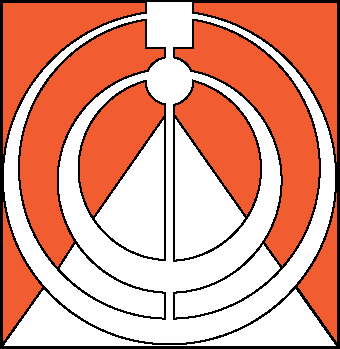Modeling Instruction in Michigan Teams Up with Mi-STAR
Thursday, January 7, 2021
A mash-up of two extraordinary teaching advances is making its way into Michigan classrooms.
Modeling with Mi-STAR, a meld of Mi-STAR and Modeling Instruction, is an offshoot of the Modeling Instruction in Michigan project. The project is funded by the MiSTEM Network and led by the MiSTEM Network director for the Oakland Region, Michael Gallagher.
A progressive teaching method, Modeling Instruction is based on the premise that students learn best when they rely on their own experiences to construct and communicate in-depth mental models or explanations of scientific phenomena, from friction to climate change. Modeling pedagogy has been shown to significantly increase students’ mastery of STEM.
So far, seven Mi-STAR units have been “modelized,” i.e., have had modeling instruction incorporated into the lesson plans. This includes activitieslike whiteboarding, discussion circles, and formative assessment opportunities. Though the modelized units were developed primarily for Mi-STAR teachers who are trained in Modeling Instruction, they are also available to other Mi-STAR teachers, along with the regular units. (If a unit has accompanying Modeling with Mi-STAR teacher notes, a link to them is included on the Unit Page.)
The Mi-STAR–Modeling Instruction interface had its start in 2015, when the Michigan Science Standards (MSS) went into effect. At the time, as a science education consultant for Oakland Schools, Gallagher was supporting districts as they searched for new curricula. “I saw a lot of strength in Mi-STAR, so I was grateful when the majority of our districts favored it,” he said. Eighteen public school districts in Oakland County have adopted Mi-STAR.
One of the things Gallagher liked about Mi-STAR was that it incorporates many principles of Modeling Instruction, including its hands-on approach and reliance on discussion over lectures. He also liked Mi-STAR’s emphasis on real-world challenges and engineering. One afternoon, in the summer of 2018 after a Modeling in Middle School workshop, he and workshop facilitator Nell Bielecki, of Berkley School District, realized that Mi-STAR could be an excellent vehicle for incorporating modeling instruction into an MSS-aligned curriculum.
“Mi-STAR and modeling are complementary,” he added. “Modeling doesn't have engineering built into it, but it does bring an instructional approach that focuses on deep understanding of science concepts. Everybody involved is really enthused about the collaboration—it’s been exciting.”
West Bloomfield teacher Andrea Williams has been using both Mi-STAR and Modeling Instruction for several years. While existing modeling material had proven transformative, “Kids are learning science for the sake of science,” she said. “That’s not always enough, especially for middle school kids.” Mi-STAR solves the problem by grounding every unit in an intriguing real-world challenge, while modeling deepens Mi-STAR’s science instruction and provides a detailed roadmap for implementing its instructional model. “It’s a perfect marriage,” said Williams.
Together, Modeling Instruction experts and experienced Mi-STAR professionals worked to develop Modeling with Mi-STAR. “We'd been working independently in our own classrooms to make sure students were getting modeling with the Mi-STAR units,” said Jenne Bush, an eighth grade science teacher at Newaygo Middle School. “Then we became a team and started thinking about how we could make modeling and Mi-STAR even better, by making rich educational products with quality at both ends, so we were not missing out on anything.”
Meanwhile, while modelers were having conversations about Mi-STAR, Mi-STAR curriculum developers were wondering how to apply modeling in the units that hadn’t been written yet. “Our curriculum development team had the chance to sit in on a modeling training, and we were blown away,” said Tony Matthys, a curriculum developer at Mi-STAR. “The modelers had developed this fantastic pedagogical tool kit that could help teachers take Mi-STAR to the next level.”
The collaboration blossomed. “My colleagues were involved in writing and piloting new Mi-STAR units, and they were also on my team to include modeling pedagogy in the units that had already been completed,” said Bush.
The first series of Modeling with Mi-STAR professional development workshops was held in summer 2019. Designed to train teachers in modeling pedagogy, the workshops guided them step by step through the modelized Mi-STAR units.
The modelized units typically do take longer to teach than a standard Mi-STAR unit, Williams said, but that may not be such a problem. Modeling with Mi-STAR focuses on units that Mi-STAR has already identified as the most important. “And we hear that districts are beginning to realize the need to go deeper” rather than just cover the material, said Williams. “Teaching this way gives kids so much better understanding. Plus it helps them develop all those other 21st-century skills: critical thinking, collaboration, listening to and respecting each other’s ideas.”
“It puts the responsibility for learning on the students,” said Bush. “You can see it physically hurts them to think hard and to explain their reasoning. Then they dig deep, they come with the information, and they take pride in it.”
Occasionally Williams looks back on the science she took in junior high and compares it to how she teaches her own students. “If I think about it too hard, it makes me a little sad,” she says. “My whole career would have been different if we’d had modeling or Mi-STAR—I could have been a biologist or an astrophysicist.”
There is one consolation, however. “I may not be an astrophysicist,” says Williams. “But now I can make one.”
If you are interested in learning more, consider attending a Modeling with Mi-STAR workshop this coming summer. Details and registration can be found at https://www.mimodelinginstruction.org/workshops.html
GET Mi-STAR NEWS BY E-MAIL!
Copyright © 2024 Mi-STAR
Mi-STAR was founded in 2015 through generous support provided by the Herbert H. and Grace A. Dow Foundation. Mi-STAR has also received substantial support from the National Science Foundation, the MiSTEM Advisory Council through the Michigan Department of Education, and Michigan Technological University.


















